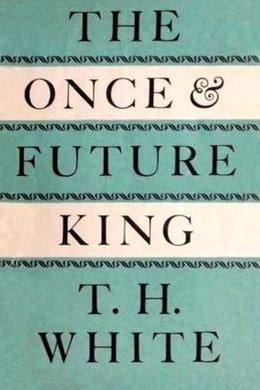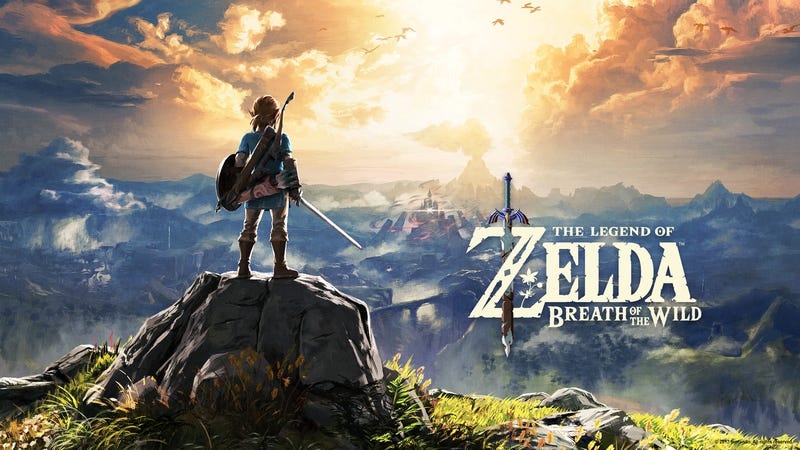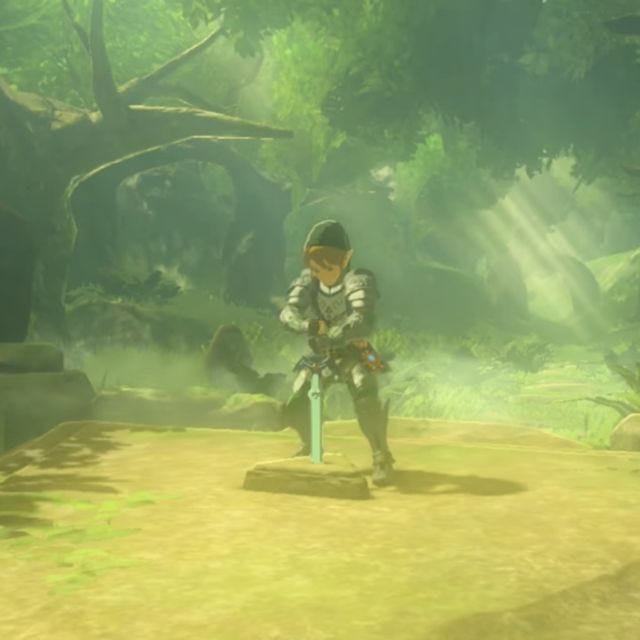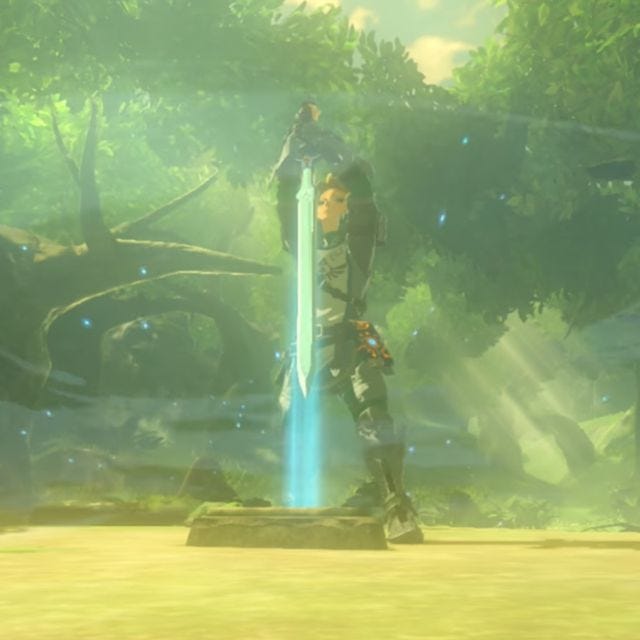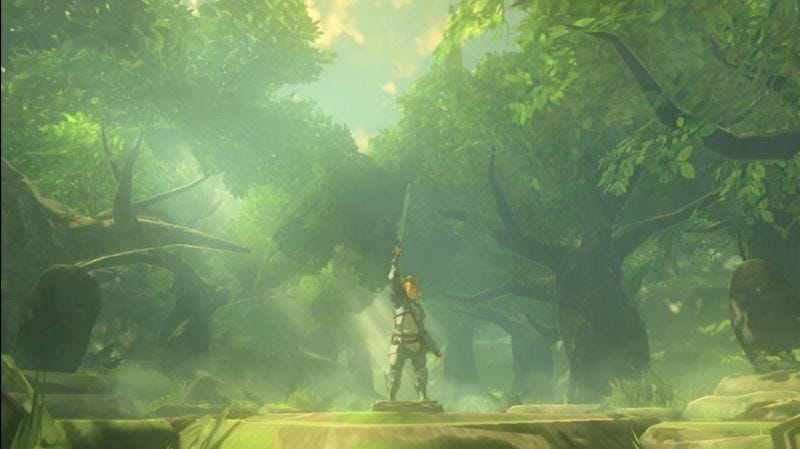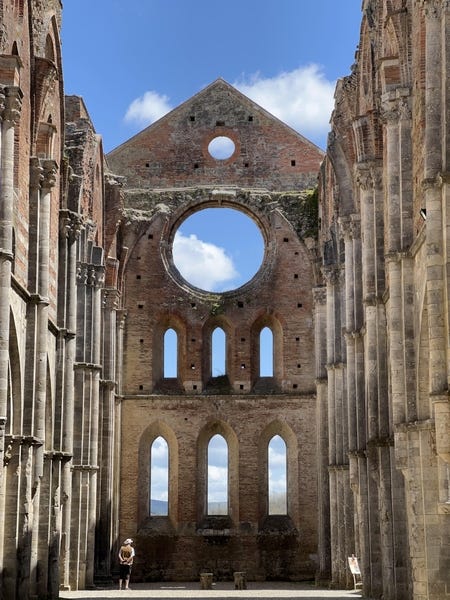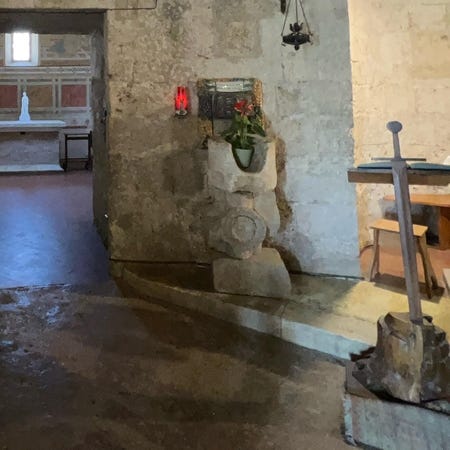One Bit of Zelda: Breath of the Wild and The Sword in the Stone
How many legends live within The Legend of Zelda? #literature #videogame
Welcome back to Artcade, the witch’s cauldron where the magic potion bubbles. Like any respectable witch’s lair, we’re putting ingredients one at a time and therefore let’s introduce the new column “One Bit of” dedicated to all those games we can label as larger-than-life. These are games with so many deep references that a single episode isn’t enough to cover them all. They are also games that I loved. So, in the future, expect more “One Bit of” episodes dedicated to the Zelda saga.
Before we begin, I want to thank you for adding Artcade to your reading list right after the first episode: Pentiment and The Ship of Fools. It was a leap of faith and we are already a bunch. A warm start for sure. A big thank you also to those of you who have shared this collection of wonders with friends. My intention is to keep most of the content free (with a rotation of three articles open to everyone and one behind a paywall), but it goes without saying that your support is incredibly helpful in keeping my morale high. Together we’ll see how big Artcade can get. For now, enjoy the read!
The Sword in the Stone was first published in 1938. It was originally a stand-alone story and later became the first book of a saga written by Terence Hanbury White. The following text is taken from the collection The Once and Future King, which contains the four books he wrote inspired by the legend of King Arthur.
"The sword," said King Pellinore, "is stuck through an anvil which stands on a stone. It goes right through the anvil and into the stone. The anvil is stuck to the stone. The stone stands outside a church. Give me some more mead."
"I don't think that's much of a wonder," remarked Sir Grummore. "What I wonder at is that they should allow such things to happen. But you can't tell nowadays, what with all these Saxon agitators."
"My dear fellah," cried Pellinore, getting excited again, "it's not where the stone is, what, that I'm trying to tell you, but what is written on it, what, where it is."[…]
King Pellinore closed his eyes tight, extended his arms in both directions, and announced in capital letters, "Whoso Pulleth Out This Sword of this Stone and Anvil, is Rightwise King Born of All England."
Terence Hanbury White (2023) [1958] The Once and Future King [Literature] [Fantasy] Arni Books
The Legend of Zelda: Breath of the Wild is a vast game; searching for every secret can keep you glued to the controller for more than two hundred hours. It’s not just about the size of the game world though. Its greatness lies in the sense of adventure you feel with every step. Breath of the Wild is considered one of the best games ever released (it holds the top spot in Edge’s “The 100 Greatest Games of Edge’s Lifetime” published in issue 390), and the entire Nintendo saga is considered a cornerstone of the industry.
The Master Sword is the most famous sword in the saga. In Breath of the Wild it is indestructible and since weapons in the game break easily, having it will make Link’s adventure much easier.
Pulling the Master Sword from the rock in which it’s embedded requires an inhuman effort and Link will lose energy in the attempt, failing if he doesn’t have enough hearts. Only by exploring the world of Hyrule he can increase their number and have a better chance of passing the test.
Obtaining the Master Sword won’t make us the king of Hyrule like in Terence Hanbury White’s story, but it symbolizes Link’s mission and only a true hero can wield it. Isn’t that enough?
Nintendo EPD (2017) The Legend of Zelda: Breath of the Wild [ゼルダの伝説 ブレス オブ ザ ワイルド, Zeruda no Densetsu: Buresu obu za Wairudo] [Video game] [Action-adventure] [50½ Hours] (Nintendo Switch) [Wii U] Nintendo
Information Desk:
Do you want to better understand the chronological order of the Zelda saga? It seems that Nintendo has released the definitive timeline, although Kotaku points out that they forgot an episode. Try again Nintendo.
How many swords stuck in rocks exist? More than you might think. In Italy, for example, more precisely in Tuscany, on a small hill near the Abbey of San Galgano—famous for being very photogenic (see the photo above)—stands the Hermitage of Montesiepi. Inside the chapel, there is a sword in the stone. Actually, two.
One is a replica in the center of the room.
The original is under a glass case made of glass polymethyl methacrylate.
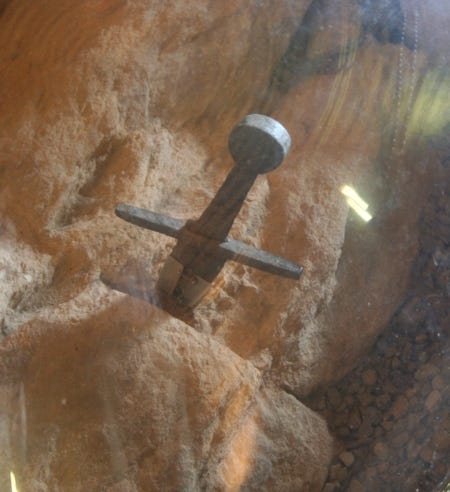
The legend of San Galgano tells that after a James Dean-like youth, the saint decided to retire to a hermit’s life. On Christmas Day in 1180, it’s said that he drove his sword into the ground, turning it into a cross.
Some people pull out swords, while others plant swords. Maybe this explains why there are so many of them around the world.
My last two coins
There’s another important difference between the original legend and Nintendo’s retelling in Breath of the Wild. In Terence Hanbury White’s story, managing to pull out the sword meant becoming king. Anyone could try, and succeeding was akin to a coronation with an almost divine mandate.
Link, in the mythology of the Nintendo saga, is already the legendary hero, but his path isn’t predetermined. Despite the cyclical nature of the The Legend of Zelda series, the recurring battle between the forces of good and evil doesn’t have a preordained outcome. Some chapters begin with the hero’s defeat, others with his victory. Similarly, the sword doesn’t belong to Link by right. On the contrary his adventure serves to accumulate the strength needed to claim it.
The actions and choices of the player are the foundation of video games and perhaps the morality has adapted to this principle. You need experience in the game to obtain the sword. You have to really want it. And in the end, you have to earn it. From this perspective, video games are much more meritocratic than the old legends. Until the next episode, ciao!



